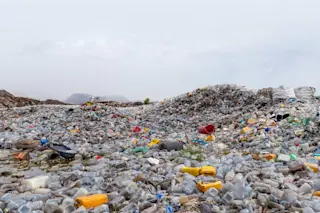Ever since plastics rose to popularity in the 1950s, they’ve become an integral part of our lives, reshaping everything from transportation to health care and construction. They’ve also become a persistent pollutant. Some 18 billion pounds of the stuff winds up in the world’s oceans each year.
Governments and businesses alike are taking action, however. Following California’s 2014 statewide ban on single-use plastic bags, cities across the country have now followed suit. And in Kenya, a year-old crackdown — with fines or prison time for plastic bag use — has been so successful that other African nations are considering similar laws. Even the U.K. and European Union moved toward future single-use plastic bans. Cities from Seattle to Miami Beach and corporations like Starbucks and Disney are proposing bans on, or phasing out, plastic straws.
But just as we’re becoming more aware of the plastic pollution problem, one of our existing ...















